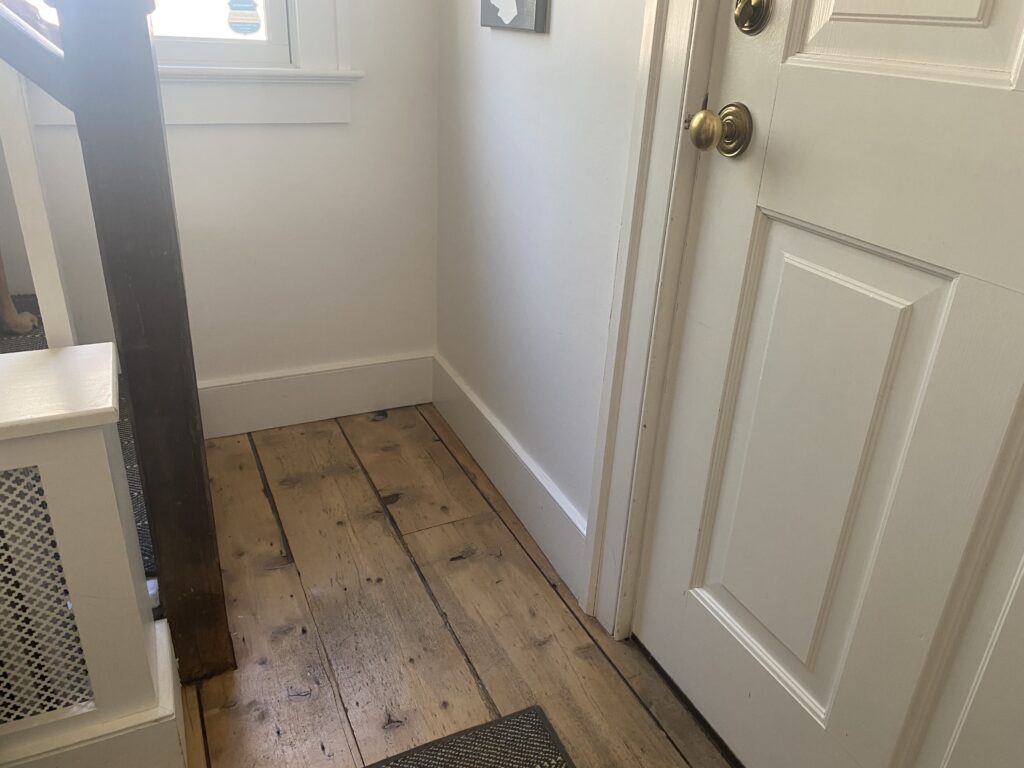Owning an old farmhouse is kind of like reading a good mystery book. As renovations begin, you never know what will happen, what will be discovered. Every wall or crevice opened can lead to a can of worms. Sometimes its gloomy news, sometimes it’s fruitful news. There is a story behind those walls and those floors. As we’ve touched upon in past posts, this is the reason we love farmhouses. The stories they tell. The ideas and uses of years past. Flooring is usually an element of a farmhouse that speaks to the home’s history. Flooring is very likely one of the reasons to fall in love with a farmhouse. Today, we’re focusing on wood farmhouse flooring. A bit of a DIY. But then again, maybe not…
Oak, pine, maple; wood farmhouse flooring comes in all different shapes, sizes and wood. Acquaint yourself with what floor material you are working with before researching the restoration options. Also, be sure there is not a need to repair any of the flooring before beginning the restoration process. Note if there are any areas that need repair or replacements. If repairing/replacing is necessary, be sure to do so before the refinish process. When there are too many repairs/replacements to make, it may be time to give up the romance of restoring the flooring and look into a full replacement. Keep this in mind before embarking on the reconditioning process.
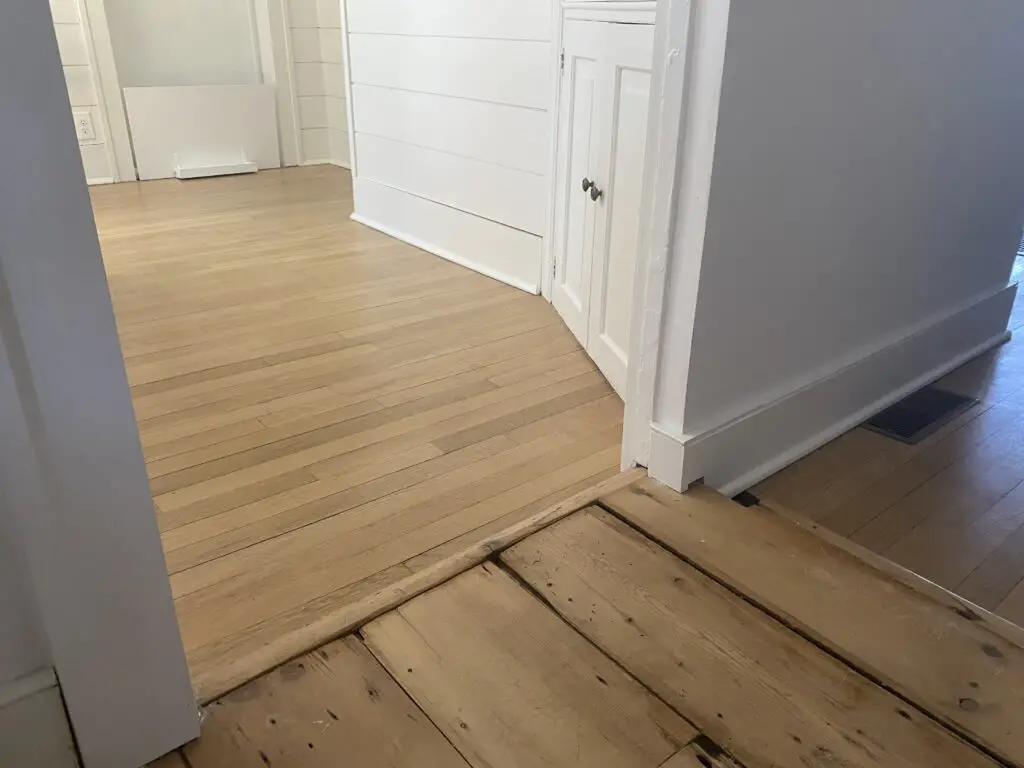
Once you’ve discovered it is safe to move forward with restoring, filling and sanding comes next. As we’ve learned in our 1890s farmhouse, humidity and temperature fluctuations create many gaps in hardwood flooring. Filling these gaps can alter the look of the flooring greatly so take care to go about this in the appropriate way. There are different methods, but what we’ve read is that it is best to spread a thinned latex filler over the whole floor before sanding. Again, best to research what would be best for the type of flooring that is being restored. Be aware that there are different sanding options, so research this before setting your restoration planning. Note that most sanding options are messy, so it is best to sand with nothing in the room/s and all entryways blocked off to protect other room’s furniture, etc. Prep is always 75% of the process, isn’t it?!
The next part of the process is the finishing. Advice given to us early on – when restoring our wide-planked pine flooring (our most beloved in our home and original to the home’s birth, 1890) – was that oil-based finishes are better for older flooring. Vintage flooring can be harder because the wood most likely came from old-growth trees. An oil finish will penetrate in the old wood of the flooring, offering the wood more protection. Oil leaves the floor looking more natural as well. Polyurethane is another option, which is a plastic that remains on the surface of the wood.
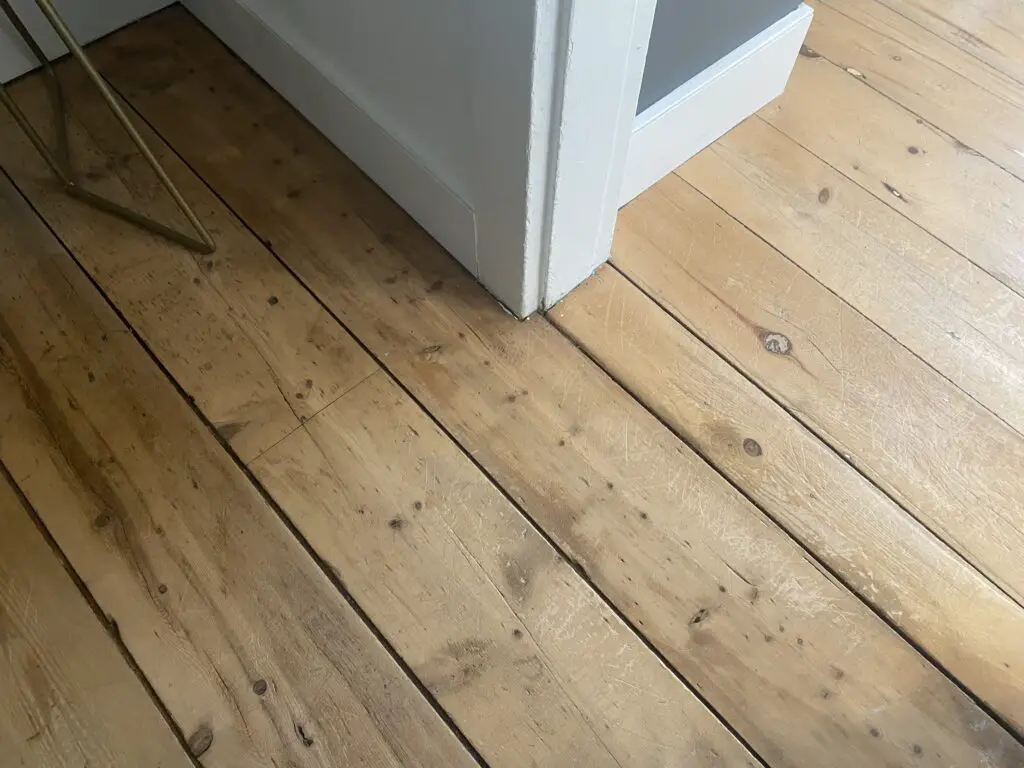
A heads up – many times, with older wood in farmhouse flooring, it may be best to skip the sanding process. Some older woods, especially after years of use and sanding from others restoring and refinishing the floors, are spent. By sanding them, yet again, you can ruin their potential to last through another long haul. On the flip side, hardwood was plenty back in the day (20th Century in particular), so the quality in the wood is typically pretty high.
When we started the process of refinishing and, essentially, protecting our beloved pine floors, we researched the best products to use. We hired someone to take on the actual refinishing because we had so many other projects in play. We knew if we did it ourselves the floors would never be ready in time for us to move our family into the house! One of the flooring experts we priced out suggested a new (at the time) water-based product. We really wanted to keep the exact color of the flooring and really, its essence. So, he suggested using “Bona Nordic Seal”. Bona Nordic Seal prides itself on being a “waterborne sanding sealer that is formulated to provide a green alternative to a whitewashed floor without the use of caustic materials such as bleach. A unique way of customizing your floor from a light whitewash to successive coats, providing a truly Scandinavian look.” We are very happy with this product. In some places, our floors have seen better days, however, we are quite certain this extensive deterioration is from 100+ years of wear-and-tear rather than the finish we chose. We also thought it is a total bonus that the Bona Nordic Seal is a green alternative.
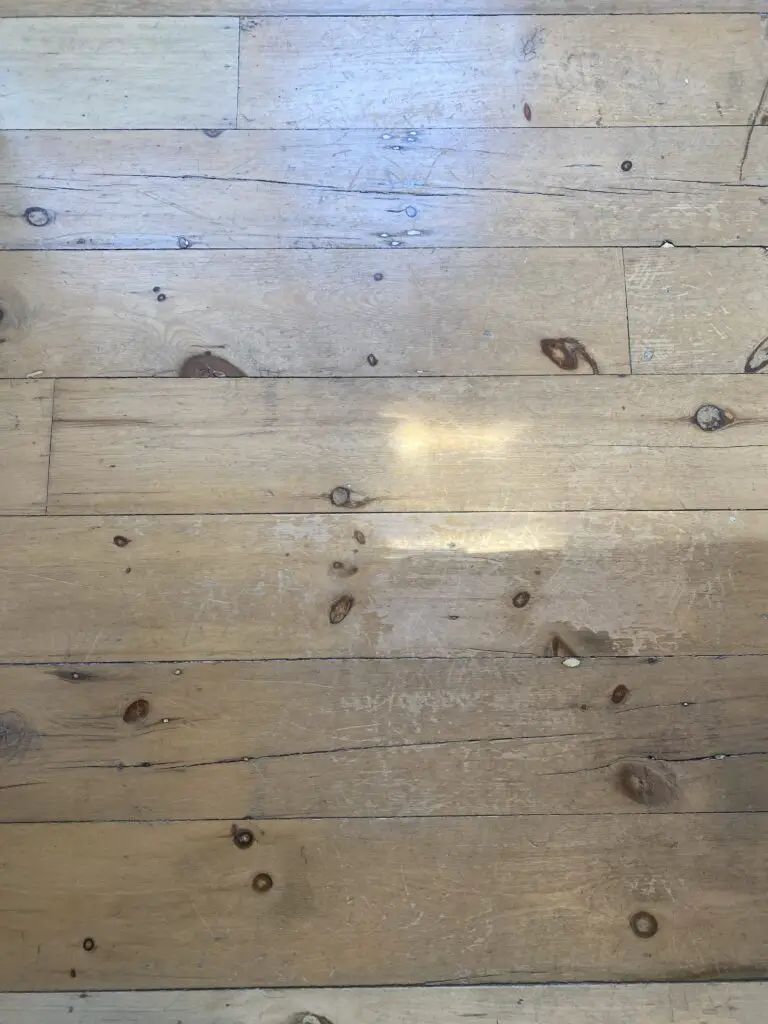
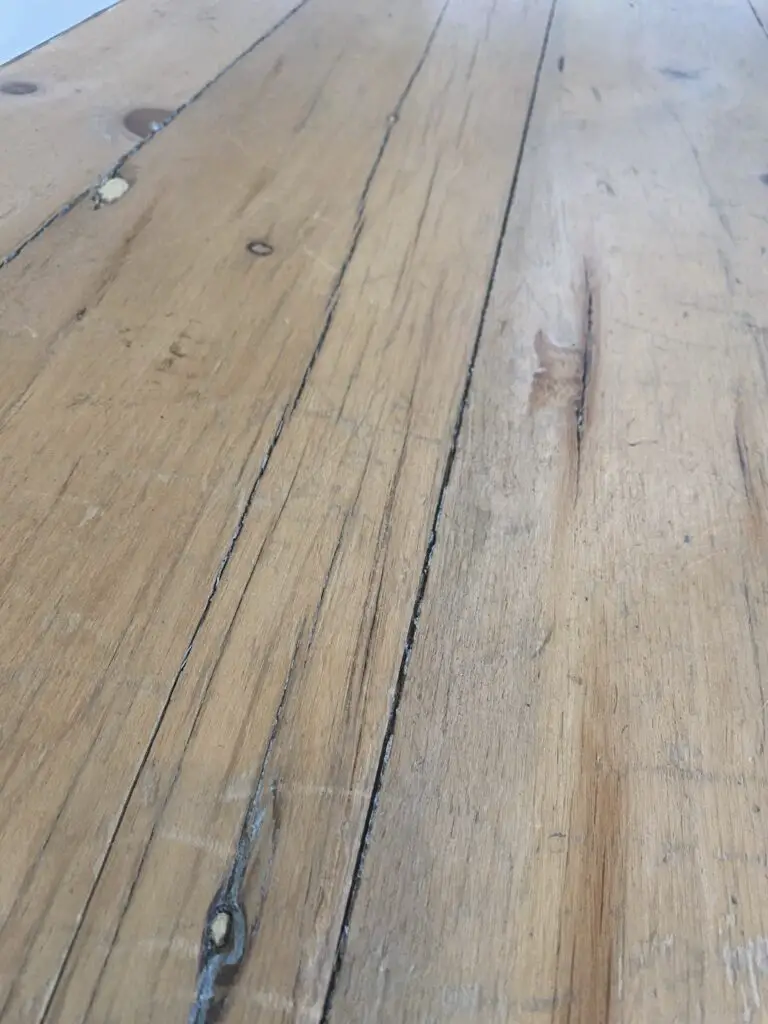
Flooring can be a tricky business, mainly because it requires a bit of research and patience. These are two good reasons to hire someone rather than taking this project on. The floors and walls are the base of a house, so investing in them is a smart idea!

